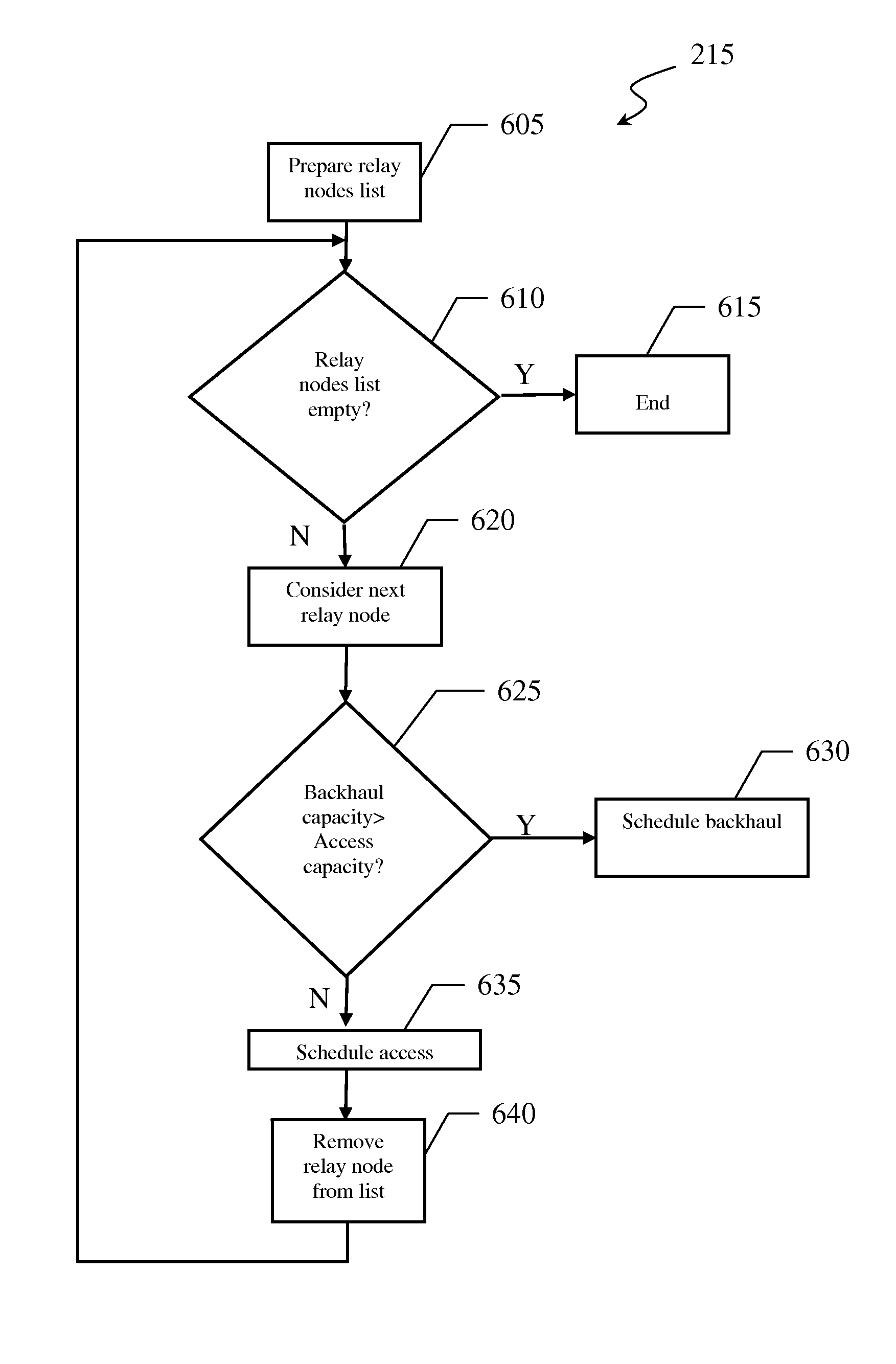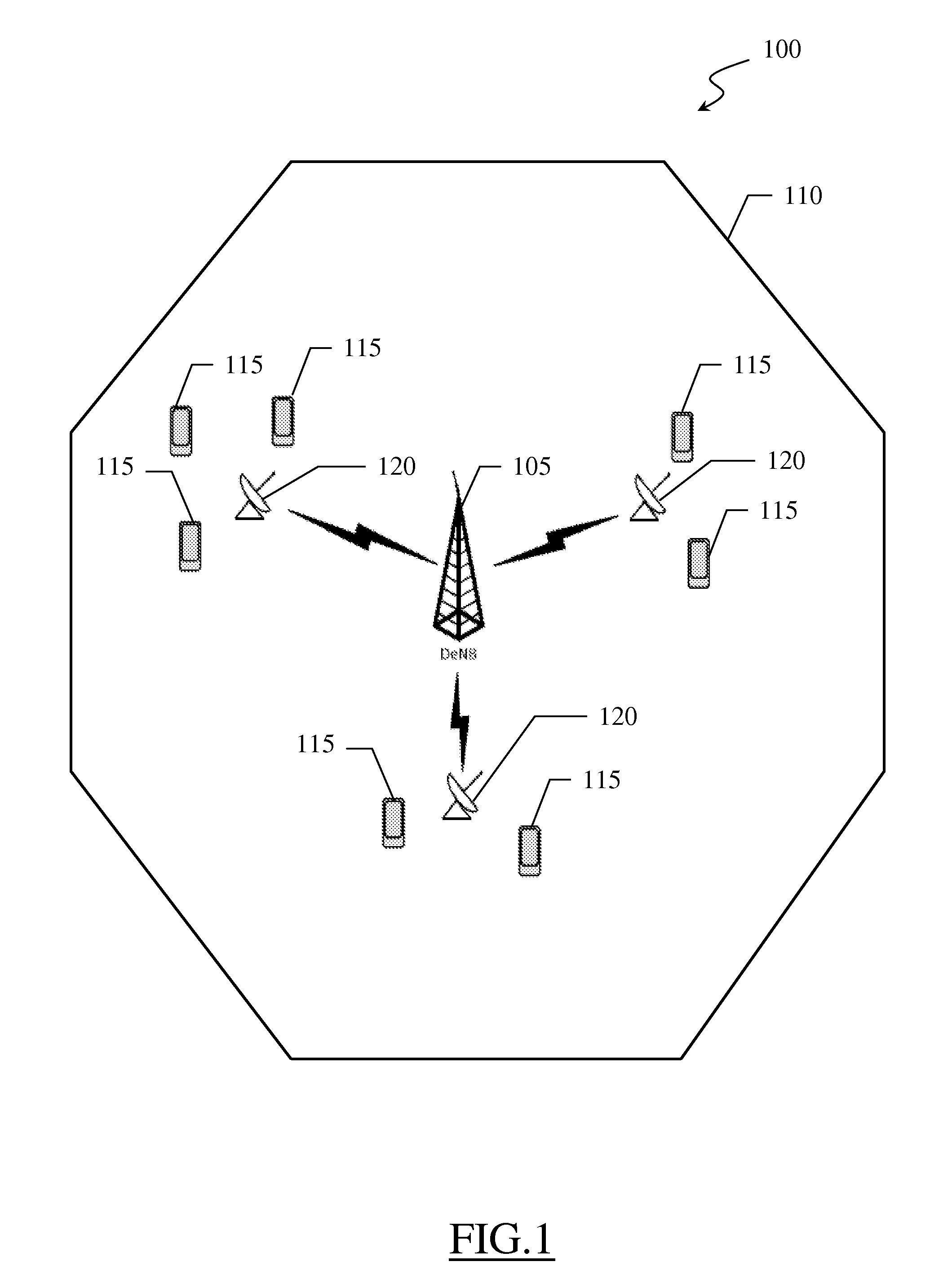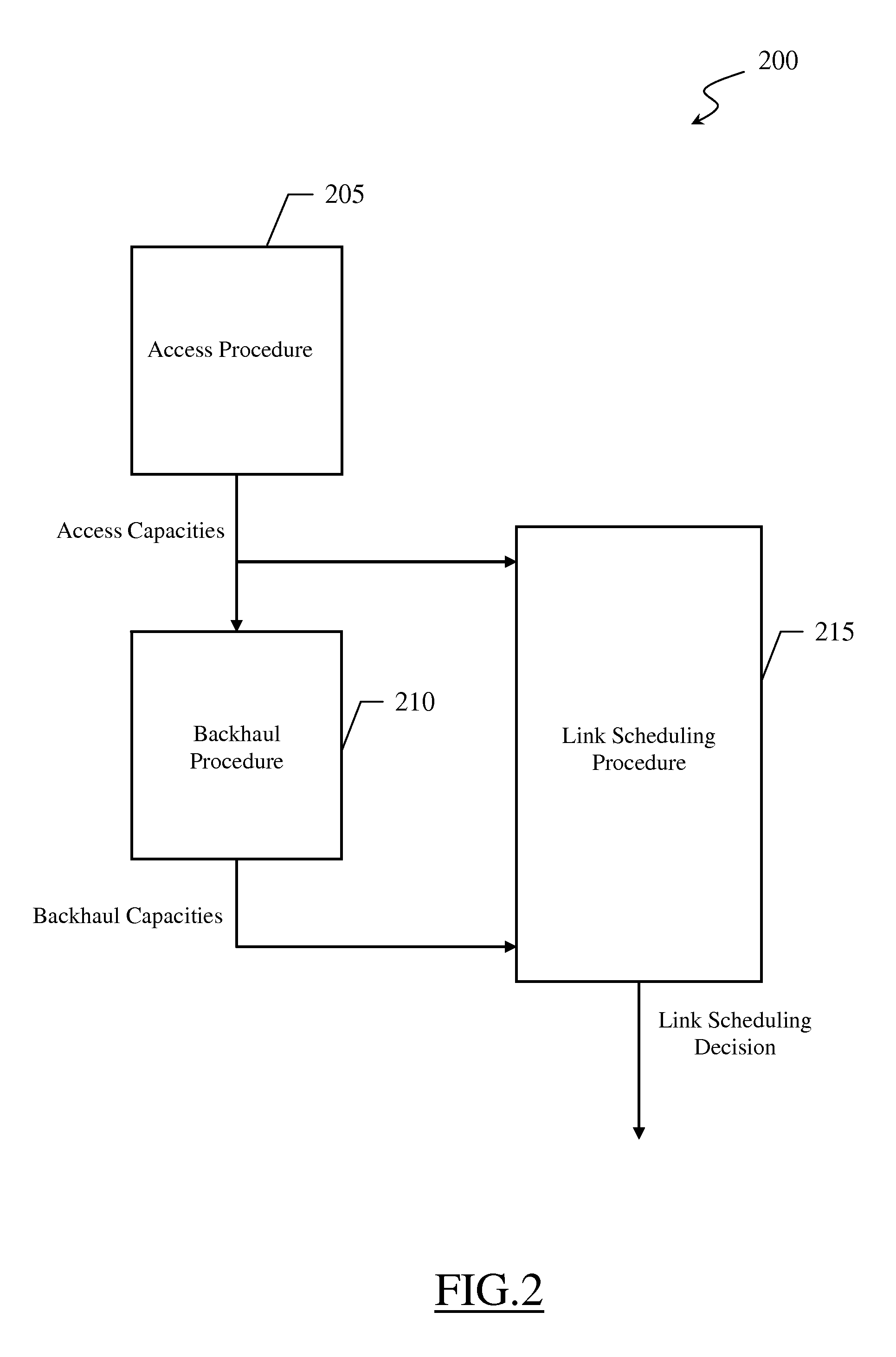Link scheduling algorithm for OFDMA wireless networks with relay nodes
a wireless network and relay node technology, applied in network topologies, network traffic/resource management, electrical devices, etc., can solve the problems of reducing the overall throughput of the cell, and the potential capacity of all or some access links is not fully explored
- Summary
- Abstract
- Description
- Claims
- Application Information
AI Technical Summary
Benefits of technology
Problems solved by technology
Method used
Image
Examples
Embodiment Construction
[0067]With reference to the figures, a wireless communications network 100 wherein the solution according to one or more embodiments of the present invention may be applied includes, as schematically shown in FIG. 1, a plurality (only one depicted in the figure) of fixed-location transceiver units, known as donor eNodeB (DeNB), such as the DeNB 105; one or more DeNBs, such as the DeNB 105, provide for radio coverage over a geographic area, also referred to as network cell, such as the network cell 110, for allowing user equipments (UEs) within the network cell (such as the user equipments 115—e.g., mobile phones—within the network cell 110) to receive a required service (e.g., a phone call). In the exemplary but not limiting embodiment described, the wireless communication network 100 is a cellular communication network (or briefly cellular network), compliant with the developing Long Term Evolution (LTE) Advanced of the Third Generation Partnership Project (3GPP) Universal Mobile T...
PUM
 Login to View More
Login to View More Abstract
Description
Claims
Application Information
 Login to View More
Login to View More - R&D
- Intellectual Property
- Life Sciences
- Materials
- Tech Scout
- Unparalleled Data Quality
- Higher Quality Content
- 60% Fewer Hallucinations
Browse by: Latest US Patents, China's latest patents, Technical Efficacy Thesaurus, Application Domain, Technology Topic, Popular Technical Reports.
© 2025 PatSnap. All rights reserved.Legal|Privacy policy|Modern Slavery Act Transparency Statement|Sitemap|About US| Contact US: help@patsnap.com



